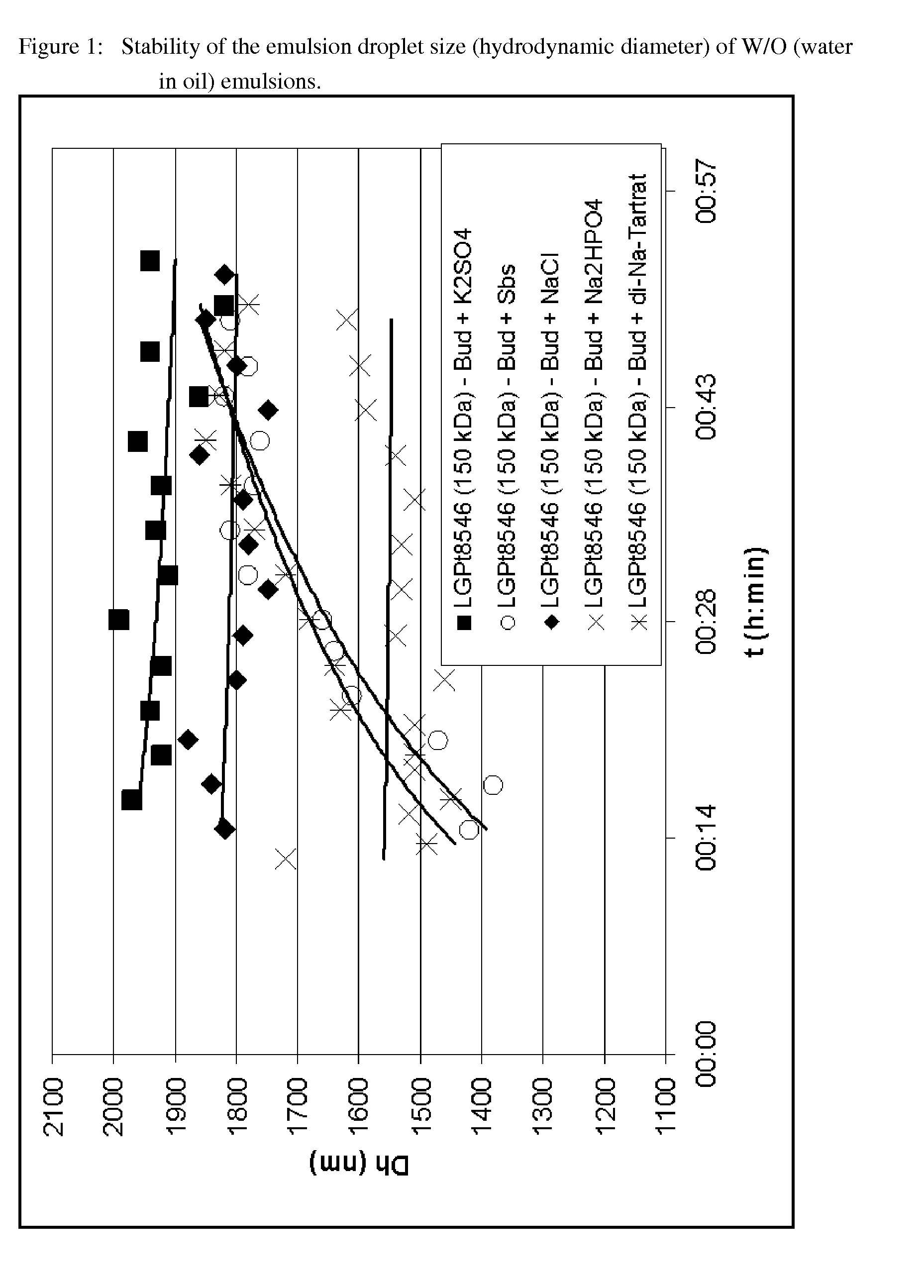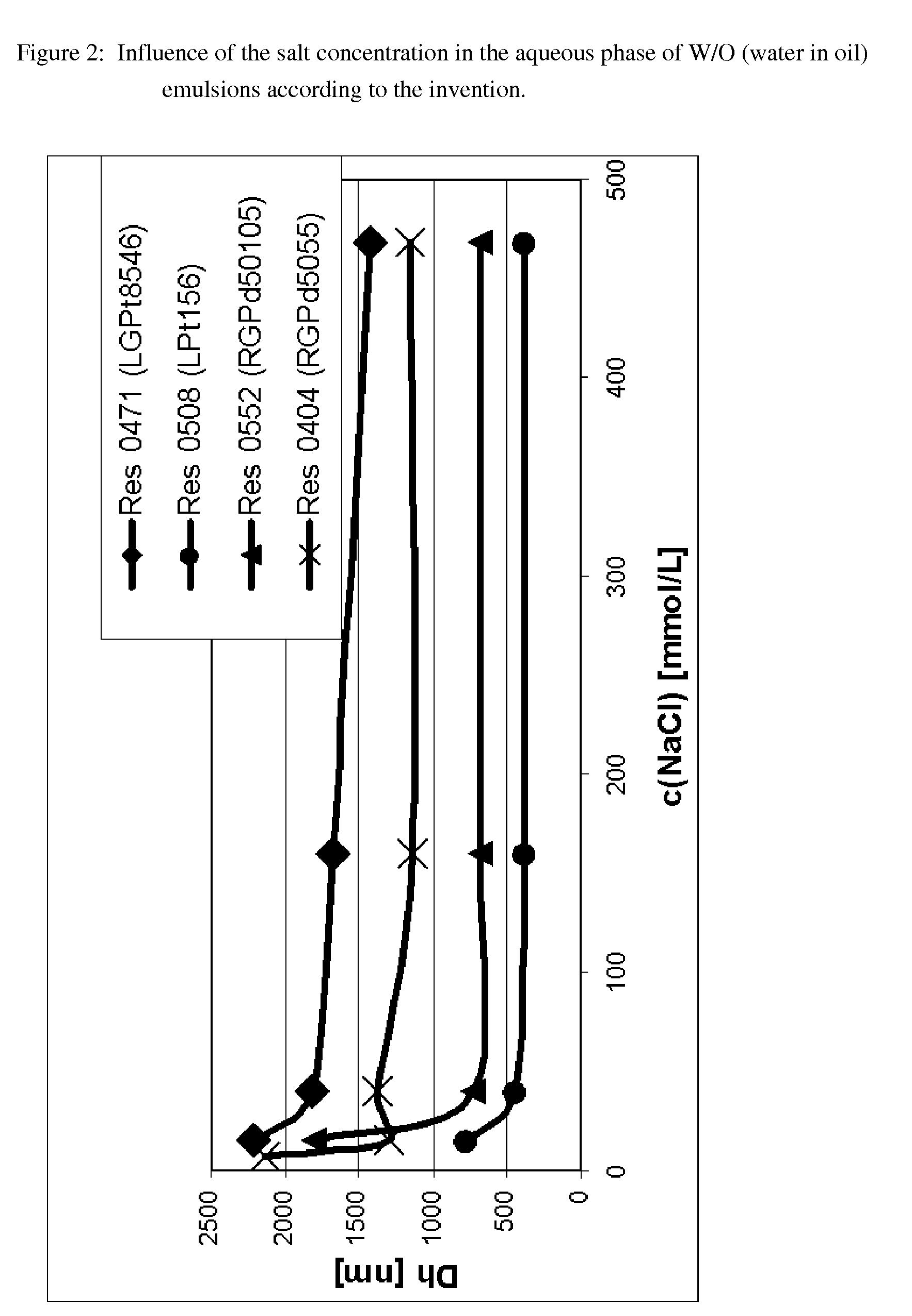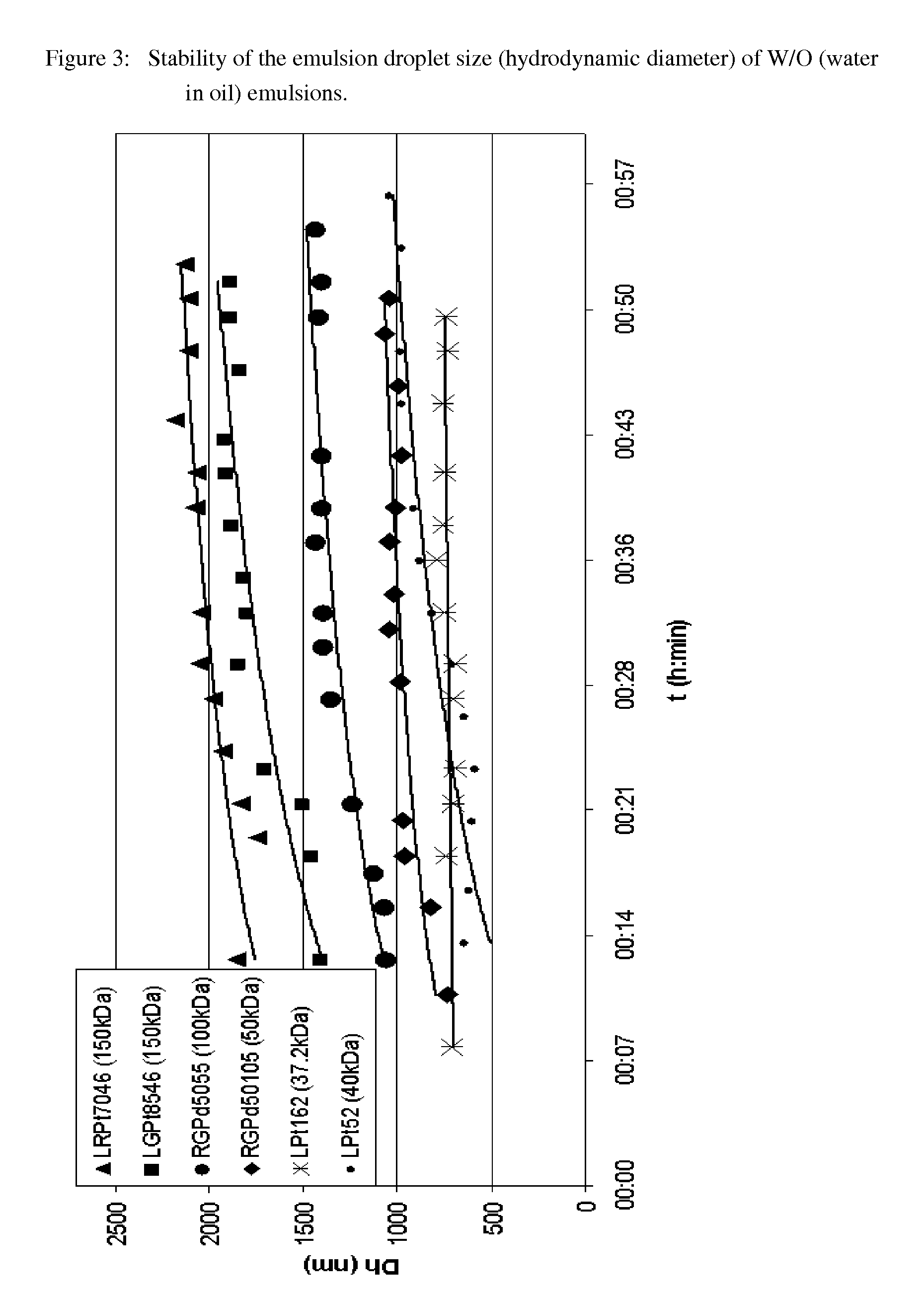Emulsions for producing medicinal products
- Summary
- Abstract
- Description
- Claims
- Application Information
AI Technical Summary
Benefits of technology
Problems solved by technology
Method used
Image
Examples
example 1
[0230]The influence of the salt concentration on the stability and suitability of W / O (water in oil) emulsions was investigated by testing the influence on the stability of different salts at the same ionic strength (20 mM) as the component of the W / O (water in oil) emulsions. FIG. 1 shows W / O (water in oil) emulsions according to the invention which contain as emulsifiers various polymers of the Resomer® type (see the captions to the Figures and the information according to Table 1). Budesonide was dissolved in dichloromethane (DCM), which constitutes the organic phase. The organic phase was then processed with an aqueous phase in the ratio 1:4 (W / O water / DCM emulsion), which contained various salts with an ionic strength of 20 mM, to form an emulsion.
[0231]As can be seen from FIG. 1, a stable emulsion can be prepared with all the salts tested, as the emulsion droplet size (hydrodynamic diameter of the emulsion) is in a suitable range between 300 nm and 3000 nm (K2SO4=potassium sul...
example 2
[0232]W / O (water in oil) emulsions which contain 4 different emulsifiers (see the information relating to FIG. 2) and similarly to Example 1 contain budesonide in the organic phase are shown in FIG. 2 (Res=Resomer®). In each case sodium chloride was dissolved in the inorganic phase which was used within the scope of the preparation of these W / O (water in oil) emulsions according to the invention. The concentrations equated to an ionic strength of 10 mM, at the minimum. When attempts were made to prepare comparable emulsions omitting the sodium chloride, it was observed that phase separation occurred spontaneously within less than 10 minutes after mixing of the phases, so that it was not possible to determine a hydrodynamic diameter / no stable emulsion was obtained (not shown, as no measured values can be obtained as a result of the instability).
Stability of the Emulsion Droplet Size of the W / O (Water in Oil) Emulsions According to the Invention
example 3
[0233]Examples of the stability characteristics of W / O (water in oil) emulsions containing an acid addition salt of an active substance, which is present in the aqueous phase in dissolved form, are shown in FIG. 3.
[0234]The W / O (water in oil) emulsions according to the invention with the results shown in FIG. 3 were obtained by dissolving various polymers of the Resomer® type as emulsifiers in the organic phase (DCM) (cf. the captions to the Figures and the information according to Table 1). Salbutamol sulphate salt was dissolved in the inorganic (aqueous) phase. 1: 4 W / O (water / DCM) emulsions were prepared from these phases by ultrasound treatment.
[0235]As can be seen in FIG. 3, all the W / O (water / DCM) emulsions according to the invention exhibit stable characteristics. The emulsion droplet size (hydrodynamic diameter of the emulsion) is in a suitable range between 300 nm and 3000 nm. Moreover the emulsion droplet size remains stably within this suitable range for the droplet size ...
PUM
| Property | Measurement | Unit |
|---|---|---|
| Fraction | aaaaa | aaaaa |
| Fraction | aaaaa | aaaaa |
| Fraction | aaaaa | aaaaa |
Abstract
Description
Claims
Application Information
 Login to View More
Login to View More - R&D
- Intellectual Property
- Life Sciences
- Materials
- Tech Scout
- Unparalleled Data Quality
- Higher Quality Content
- 60% Fewer Hallucinations
Browse by: Latest US Patents, China's latest patents, Technical Efficacy Thesaurus, Application Domain, Technology Topic, Popular Technical Reports.
© 2025 PatSnap. All rights reserved.Legal|Privacy policy|Modern Slavery Act Transparency Statement|Sitemap|About US| Contact US: help@patsnap.com



